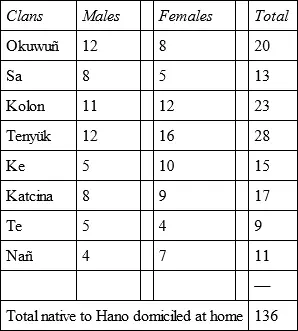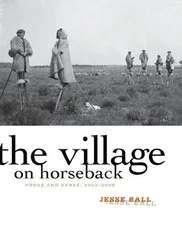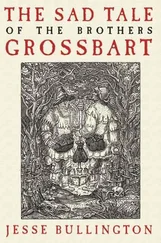Jesse Fewkes - The Winter Solstice Altars at Hano Pueblo
Здесь есть возможность читать онлайн «Jesse Fewkes - The Winter Solstice Altars at Hano Pueblo» — ознакомительный отрывок электронной книги совершенно бесплатно, а после прочтения отрывка купить полную версию. В некоторых случаях можно слушать аудио, скачать через торрент в формате fb2 и присутствует краткое содержание. Жанр: Мифы. Легенды. Эпос, foreign_antique, foreign_prose, на английском языке. Описание произведения, (предисловие) а так же отзывы посетителей доступны на портале библиотеки ЛибКат.
- Название:The Winter Solstice Altars at Hano Pueblo
- Автор:
- Жанр:
- Год:неизвестен
- ISBN:нет данных
- Рейтинг книги:4 / 5. Голосов: 1
-
Избранное:Добавить в избранное
- Отзывы:
-
Ваша оценка:
- 80
- 1
- 2
- 3
- 4
- 5
The Winter Solstice Altars at Hano Pueblo: краткое содержание, описание и аннотация
Предлагаем к чтению аннотацию, описание, краткое содержание или предисловие (зависит от того, что написал сам автор книги «The Winter Solstice Altars at Hano Pueblo»). Если вы не нашли необходимую информацию о книге — напишите в комментариях, мы постараемся отыскать её.
The Winter Solstice Altars at Hano Pueblo — читать онлайн ознакомительный отрывок
Ниже представлен текст книги, разбитый по страницам. Система сохранения места последней прочитанной страницы, позволяет с удобством читать онлайн бесплатно книгу «The Winter Solstice Altars at Hano Pueblo», без необходимости каждый раз заново искать на чём Вы остановились. Поставьте закладку, и сможете в любой момент перейти на страницу, на которой закончили чтение.
Интервал:
Закладка:
The census of Hano in December, 1898, was as follows:

The above enumeration of Hano population does not include Walpi and Sitcomovi men married to Hano women (23), nor Tewa men living in the neighboring pueblos (15). 9 9 It is impossible to make this enumeration accurate, hence these numbers must be regarded as approximations.
Adding these, the population is increased to 174, which may be called the actual enumeration at the close of 1898. Subsequent mortality due to smallpox and whooping-cough will reduce the number below 160.
In the following lists there are arranged, under their respective clans, the names of all the known inhabitants of Hano. There have been several deaths since the lists were made (December 1, 1898), and several births which also are not included. It will be noted that the majority have Tanoan names, but there are several with names of Hopi origin, for in these latter instances I was unable to obtain any other. 10 10 It is not unusual to find several names applied to the same person. Thus, Hani, the chief of the Piba clans at Walpi, is called Lesma in the Snake kiva. The Walpi call the author Nakwipi, but the Flute chief at Cipaulovi insists that his name is Yoyowaiamû, which appellation was given when the author was inducted into the Flute rites at that pueblo in 1891.
Okuwuñ-towa , or Rain-cloud clan. – Men and boys: Kalakwai, Kala, Tcüa, Wiwela, Kahe, Yane, Solo, Yunci, Pade, Klee, Kochayna, Këe (12). Women and girls: Sikyumka, Kwentce, Talitsche, Yoyowaiolo, Pobitcanwû, Yoanuche, Asou, Tawamana (8). Total, 20.
Sa-towa , or Tobacco clan. – Men and boys: Anote, Asena, Tem[)e], Ipwantiwa, Howila, Nuci, Yauma, Satee (8). Women and girls: Okañ, Heli, Kotu, Kwañ, Mota (5). Total, 13.
Kolon-towa , or Corn clan. – Men and boys: Polakka, Patuñtupi, Akoñtcowu, Komaletiwa, Agaiyo, Tcid[)e], Oba, Toto, Peke, Kelo, Tasce (11). Women and girls: Kotcaka, Talikwia, Nampio, Kweñtcowû, Heele, Pelé, Kontce, Koompipi, Chaiwû, Kweckatcañwû, Awatcomwû, Antce (12). Total, 23.
Tenyük-towa , or Pine clan. – Men and boys: Tawa, Nato, Wako, Paoba, Topi, Yota, Pobinelli, Yeva, Tañe, Lelo, Sennele, Poctce (12). Women and girls: Toñlo, Hokona, Kode(?), Sakpede, Nebenne, Tabowüqti, Poh[ve], Saliko, Eye, Porkuñ, Pehta, Hekpobi, Setale, Naici, Katcine, Tcenlapobi (16). Total, 28.
Ke-towa , or Bear clan. – Men and boys: Mepi, Tae, Tcakwaina, Poliella, Tegi (5). Women and girls: Kauñ, Kalaie, Pene, Tcetcuñ, Kala, Katcinmana, Selapi, Tolo, Pokona, Kode (10). Total 15. Tcaper ("Tom Sawyer") may be enrolled in this or the preceding family. He is a Paiute, without kin in Hano, and was sold when a boy as a slave by his father. His sisters were sold to the Navaho at the same time. Tcaper became the property of an Oraibi, later of a Tewa man, now dead, and so far as can be learned is the only Paiute now living at Hano.
Katcina-towa. – Men and boys: Kwevehoya, Taci, Avaiyo, Poya, Oyi, Wehe, Sibentima, Tawahonima (8). Women and girls: Okotce, Kwenka, Awe, Peñaiyo, Peñ, Poñ, Tcao, Poschauwû, Sawiyû (9). Total, 17.
Te-towa , or Cottonwood clan. Men and boys: Sania, Kuyapi, Okuapin, Ponyin, Pebihoya (5). Women and girls: Yunne, Pobitche, Poitzuñ, Kalazañ (4). Total, 9.
Nañ-towa , or Sand clan. – Men and boys: Puñsauwi, Pocine, Talumtiwa, Cia (4). Women and girls: Pocilipobi, Talabensi, Humhebuima, Kae, Avatca, "Nancy," Simana (7). Total, 11.
The present families in Hano are so distributed that the oldest part of the pueblo is situated at the head of the trail east of the Moñkiva . This is still owned and inhabited by the Sa , Kolon , and Ke clans, all of which probably came from Tcewadi. The Katcina and related Tenyük , as well as the Okuwuñ and related Nañ clans, are said, by some traditions, to have joined the Tewa colonists after they reached the Hopi mesas, and the position of their houses in respect to the main house-cluster favors that theory. Other traditions say that the first pueblo chief of the Tewa was chief of the Nañ-towa . Too much faith should not be put in this statement, notwithstanding the chief of the Tewakiva belongs to the Nañ-towa . It seems more probable that the Ke or Bear clan was the leading one in early times, and that its chief was also kimoñwi or governor of the first settlement at the foot of the mesa.
Tewa Legends
According to one authority (Kalakwai) the route of migration of the Hano clans from their ancient home, Tcewadi, led them first to Jemesi (Jemez), where they rested a year. From Jemesi they went to Orpinpo or Pawikpa ("Duck water"). Thence they proceeded to Kepo, or Bear spring, the present Fort Wingate, and from this place they continued to the site of Fort Defiance, thence to Wukopakabi or Pueblo Ganado. Continuing their migration they entered Puñci, or Keam's canyon, and traversing its entire length, arrived at Isba, or Coyote spring, near the present trail of the East Mesa, where they built their pueblo. This settlement (Kohti) was along the foot-hills to the left of the spring, near a large yellow rock or cliff called Sikyaowatcomo ("Yellow-rock mound"). There they lived for some time, as the debris and ground-plan of their building attest. Their pueblo was a large one, and it was conveniently near a spring called Uñba, now filled up, and Isba, still used by the Hano people.
Shortly after their arrival Ute warriors made a new foray on the Hopi pueblos, and swarmed into the valley north of Wala, 11 11 The gap in the East Mesa just at the head of the trail before one enters Hano. The pueblo of Walpi derived its name from this gap.
capturing many sheep which they drove to the hills north of the mesa. 12 12 Their nomadic enemies raided so near the pueblo of the East Mesa that the priests were unable to visit their shrines without danger. The idol of Talatumsi , used in the New-fire ceremony, was removed from its shrine north of Wala on that account.
The Tewa attacked them at that place, and the Ute warriors killed all the sheep which they had captured, making a protecting rampart of their carcasses. On this account the place is now called Sikwitukwi ("Meat pinnacle"). The Tewa killed all but two of their opponents who were taken captives and sent home with the message that the Bears had come, and if any of their tribe ever returned as hostiles they would all be killed. From that time Ute invasions ceased.
According to another good authority in Tewa lore, the Asa people left "Kaëkibi," near Abiquiu, in northern New Mexico, about the time the other Tewa left Tcewadi They traveled together rapidly for some time, but separated at Laguna, the Asa taking the southern route, via Zuñi. The Tewa clans arrived first (?) at Tusayan and waited for the Asa in the sand-hills near Isba. Both groups, according to this authority, took part in the Ute fight at Sikwitukwi, and when they returned the village chief of Walpi gave the Asa people for their habitation that portion of the mesa top northeast of the Tewakiva , while the present site of Hano was assigned to the Tewa clans. During a famine the Asa moved to Tübka (Canyon Tsegi, or "Chelly"), where they planted the peach trees that are still to be seen. The ruined walls east of Hano are a remnant of the pueblo abandoned by them. The Asa intermarried with the Navaho and lost their language. When they returned to the East Mesa the Hopi assigned to them for their houses that part of Walpi at the head of the stairway trail on condition that they would defend it. 13 13 Later, as the outcome of a petty quarrel near the middle of the eighteenth century, the Asa women moved to Sitcomovi which they founded. At present there is only one woman of this clan in Walpi, and no women of the Honani , both of which clans are strong in Sitcomovi.
Интервал:
Закладка:
Похожие книги на «The Winter Solstice Altars at Hano Pueblo»
Представляем Вашему вниманию похожие книги на «The Winter Solstice Altars at Hano Pueblo» списком для выбора. Мы отобрали схожую по названию и смыслу литературу в надежде предоставить читателям больше вариантов отыскать новые, интересные, ещё непрочитанные произведения.
Обсуждение, отзывы о книге «The Winter Solstice Altars at Hano Pueblo» и просто собственные мнения читателей. Оставьте ваши комментарии, напишите, что Вы думаете о произведении, его смысле или главных героях. Укажите что конкретно понравилось, а что нет, и почему Вы так считаете.











